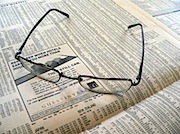
The future does not bode well on the cost side.
We wrote earlier today that while we thought United Airline’s numbers today were worse at first blush, that investors were punishing shares of AMR much more severely.
Here’s why.
The airline gave what could at best be called less than encouraging cost guidance for 2009.
Analysts Jamie Baker and Mark Streeter with JP Morgan issued a note today concerning the results in which they said,
“Unlike UAUA, We’re Discouraged By AMR Cost Guidance – Pension expense appears to lie at the heart of what we consider to be discouraging 2009 ex-fuel cost guidance from AMR, a phenomenon that may have implications for CAL & DAL, though not LCC or JBLU. Specifically, AMR is guiding to a 2009, consolidated ex-fuel CASM increase of 7.6%, materially higher than our ambitious +4.1% forecast and representing over an untaxed dollar in negative earnings variance – holding other inputs constant. On the fuel side, Q109 $2.04/gallon all-in guidance is consistent with our $2.10, as is AMR’s full-year $2.06 all-in (identical to our forecast).”
And while United Airlines has garnered the most negative publicity over the last month or so concerning the high cost of its ill-placed fourth quarter fuel hedges, AMR got hit in the fourth quarter as well.
As Jamie explained,
“Similar to UAUA’s release this morning (and to what we expect to hear from those who have yet to report), AMR’s liquidity was clearly hurt by incremental cash collateral deposits posted with fuel hedging counterparties. AMR ended 4Q08 with an unrestricted cash balance of $3.1 billion, compared to $4.6 billion as of 3Q08. The implied $1.5 billion sequential net cash burn was driven by the company’s cash collateral postings on under-water fuel hedges ($575 million in cash collateral with counterparties at the end of 4Q08), debt and capital lease principal payments, capital expenditures, and changes in working capital (exact figures for debt amortization, capex, and change in working capital were not disclosed in the press release). At the end of 3Q08, AMR held $240 million in cash deposits from fuel hedge counterparties, but with falling oil prices during 4Q08, the company saw a reversal of approximately $815 million, resulting in the $575 million figure mentioned above. The worse than expected pension cost guidance is worth monitoring. Nevertheless, we expect AMR’s liquidity profile to improve significantly in 2009 as under-water hedges roll-off and the airline is able to benefit from much lower y/y oil prices.”